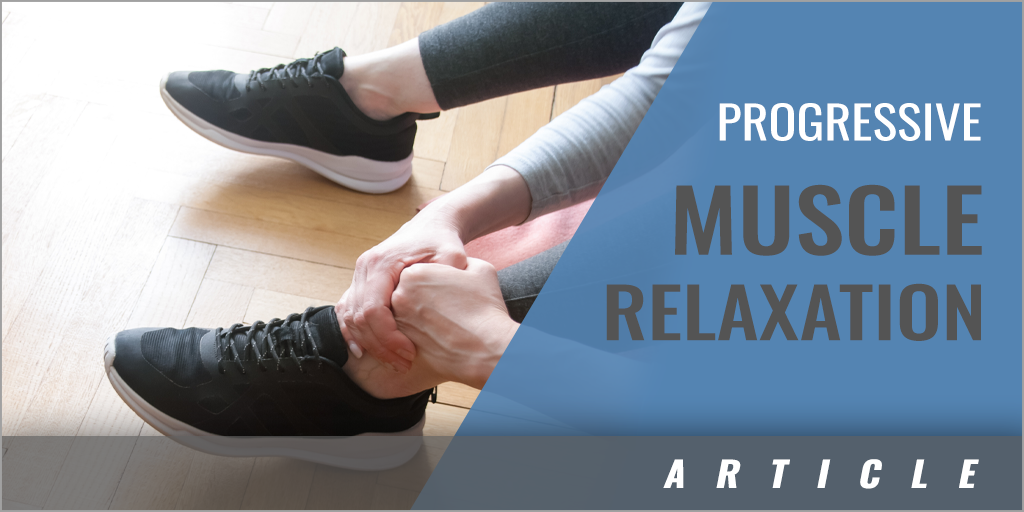|
By: Wade Gilbert Originally Published in: Coaching Better Every Season Provided by: Human Kinetics Progressive muscle relaxation helps you to first tense each of four muscle groups, part by part, in order to tire it out and then relax it deeply. When you tense a muscle group, gradually build up the tension. Like a car gradually accelerating, work up to 100 mph by starting at 10, then increasing to 20, then 30, 40, 50, 60, 70, 80, 90 and finally 100 percent maximum tension. Then you're going to hold that all-out tension for five to seven seconds before letting it all go at once. When you do, relax those muscles as deeply and completely as possible for 20-30 seconds. (Standard protocol is to relax each muscle group twice before moving on, but this should be adjusted up or down to meet individual needs.) To begin, get into a comfortable position, seated or lying down. To tense the muscles of muscle group 1, the shoulders, arms, and hands, make a tight fist with both arms and push the elbows down and into your sides. Ready-go! 10, 20, 30, 40, 50, 60, 70, 80, 90, 100. Hold the tension, feel it pull, tighter, tighter, RELAX. Just let it all go now. Let all the tension go from the muscles of your shoulders, arms, and hands, allowing those muscle fibers to loosen up, to smooth out, to unwind, and to relax. Let the tension flow down your arms and out the tips of your fingers. Use your breathing to fuel your relaxation, allowing those muscles to go deeper and deeper into relaxation. With each breath, feel the relaxation deepening and spreading. Concentrate on learning to recognize what relaxation feels like so you can compare and contrast Keeping the muscles of the shoulders, arms, and hands as relaxed as possible, move to muscle group 2, the muscles of the face and neck. Tense these muscles by lifting the eyebrows high, wrinkling up your nose, biting down hard, and pulling the corners of your mouth back while doing an isometric contraction with your neck (i.e., use the muscles of the front part of the neck to try to touch your chin to your chest as you use the muscles of the back part of the neck to try to prevent that from happening). Ready-go! 10, 20, 30, 40, 50, 60, 70, 80, 90, 100. Hold the tension, feel it pull, tighter, hold it, hold it, RELAX. Just let all of the tension go and feel it slowly draining out of your face and neck. Feel those muscle fibers loosening up, smoothing out, unwinding, and gradually relaxing. Use your breathing to help that relaxation to deepen and spread. Consciously focus on the feelings of relaxation. Learn what those feelings of relaxation are like and how they differ from the feelings of tension that you sometimes have. Allow your breathing to continue to promote greater relaxation of the face and neck as more and more muscle fibers unwind and relax with each breath. Allow those muscles to get very loose, limp, heavy, and relaxed. Concentrate on letting go the final residual tension from your face and neck, along with your shoulders, arms, and hands. Relax these muscles deeply and completely. (Repeat cycle for group 2 as needed.) While maintaining the relaxation in your shoulders, arms, and hands and face and neck, move to the third muscle group-the chest, back, and stomach. Tense these muscles by taking a deep breath and holding it while pulling your shoulders back and together and making your stomach hard. Ready - go! 10, 20, 30, 40, 50, 60, 70, 80, 90, 100. Hold the tension, feel it pull, tighter, hold it, tighter, hold it, RELAX. Just let all the tension flow out of your chest, back, and stomach. Allow those muscles to loosen up, smooth out, unwind, and relax. Use your breathing to promote deeper and more complete relaxation, helping the relaxation deepen and spread with each breath. Be aware of how your relaxation feels and distinguish it from the tension you were experiencing before. Concentrate on the differences as well as the similarities so that you'll be able to diagnose even small levels of tension in your chest, back, or stomach when they occur. Use your breathing to help promote deeper levels of relaxation. Remember that the longer you relax, the more muscle fibers will let go and get loose, limp, heavy, and relaxed. (Repeat cycle for group 3 as needed.) Keeping the muscles in the upper body relaxed, move to the final muscle group - the hips, thighs, calves, and feet. Tense this muscle group by making your upper legs - both quads and hamstrings - hard using an isometric contraction, pulling your toes back toward you or pointing them away from you - whichever gets the best tension in your calves - and turning your feet slightly inward and curling your toes slightly. Ready - go! 10, 20, 30, 40, 50, 60, 70, 80, 90, 100. Hold the tension, feel it pull, hold it, tighter, hold that tension, tighter, RELAX. Just let it all go now. Feel all of that tension draining down your legs and out your toes. Feel those muscle fibers slowly letting go as they loosen up, smooth out, unwind, and relax. Let your breathing fuel your relaxation, with each slow, deep, regular diaphragmic breath helping your muscle fibers to go deeper and deeper and deeper into relaxation. Feel relaxation slowly consuming these muscles, and feel it deepen and spread. Concentrate on those feelings of deep relaxation and distinguish them from the tension you experienced before. Learn to diagnose even minute levels of tension in your muscles and relax it away. Use your breathing to continue to relax more and more muscle fibers. Feel your relaxation deepening and spreading. Feel those muscles becoming very loose, limp, heavy, and relaxed. Let it all go and allow yourself to experience deep, enjoyable levels of relaxation. (Repeat cycle for muscle group 4 as needed.) To ensure that you are completely relaxed, go back and scan each muscle group in turn for any remaining tension. If you are already relaxed in a muscle group, continue relaxing. If you have residual tension, do another tension-relaxation cycle to help you relax again as deeply and completely as possible. Having scanned your body for any residual tension in the four muscle groups and eliminated it, you should feel pretty relaxed throughout your entire body. Shift your attention from specific muscles groups to the relaxation throughout your entire body and how that relates to your deep, regular diaphragmic breathing. Continue breathing deeply and regularly and focusing totally on the feelings of relaxation in every part of your body. Follow with a conditioned relaxation process. Each time you exhale say your relaxation cue word to yourself while focusing on your breathing and what it feels like to be deeply relaxed. Pairing those feelings of deep relaxation with your cue word each time you exhale strengthens the association between the two, so that you can use your cue word to trigger rapid relaxation in your daily life. If you happen to have any stray thoughts, worries, or concerns, just let them go and allow them to float out of your mind as you continue to focus on your breathing and the feelings of deep relaxation throughout your body. Focus on those feelings of relaxation, and contrast them to the tension you felt before so that you can diagnose and release even minute levels of tension as needed. Continue to take slow, deep, and regular breaths, and each time you exhale say that cue word to yourself. Once you've counted 15-20 breaths during conditioned relaxation, end the session by counting backward from four to one. At four, begin to move your legs and feet to get the circulation going again. At three, move your arms and hands. At two, roll your head and neck. At one, open your eyes when it feels comfortable. Your body should feel very relaxed as if you've just awoken from Reprinted, by permission, from D. Burton and T.D. Raedeke, 2008, Sport psychology for coaches (Champaign, IL: Human Kinetics). 257-258. Adapted from D.A. Bernstein, T.D. Borkovec, and H. Hazlett-Stevens, 2000, New directions in progressive relaxation training: A guidebook for helping professionals (New York: Praeger). |






